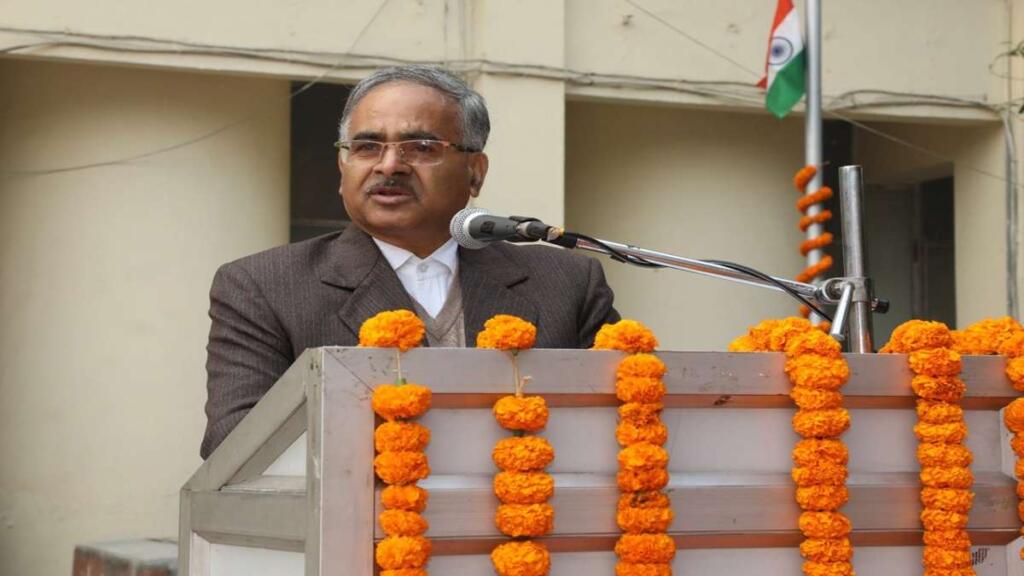NCERT Director Dinesh Prasad Saklani recently announced a new policy that allows the interchangeable use of ‘India’ and ‘Bharat’ in NCERT textbooks. This policy aligns with the constitutional provision that recognizes both names. The decision is based on a recommendation from a prominent high-level committee. This committee had advocated for the inclusion of ‘Bharat’ alongside ‘India’ in school materials, emphasizing the cultural and historical significance of the name ‘Bharat’. By implementing this change, NCERT aims to reflect constitutional values and respect India’s rich heritage in educational content, ensuring students understand both terms equally.
Implementation Across NCERT Textbooks
Saklani emphasized the flexibility of this approach, stating, “We adhere to constitutional guidelines which permit the use of both ‘Bharat’ and ‘India’. There is no restriction on their use; we will opt for ‘India’ or ‘Bharat’ as appropriate.”
He further noted, “Both terms are already in use across our current books and will continue to be used in upcoming editions. Therefore, debates over this matter are unnecessary.”
Recent Government Usage and Recommendations
Recent instances include the government’s use of ‘President of Bharat’ in G20 communications and the use of ‘Bharat’ on Prime Minister Narendra Modi’s nameplate during the Shikhar Sammelan in New Delhi. Last year, a committee chaired by C.I. Isaac recommended incorporating ‘Bharat’ in place of ‘India’ in NCERT’s school curriculum textbooks. This proposal involved changes such as replacing ‘Ancient History’ with ‘Traditional History’ and integrating Indian Knowledge Systems (IKS) across subjects.
Historical and Cultural Significance
Isaac highlighted the profound historical significance of the term ‘Bharat’, noting its presence in ancient texts such as the Vishnu Purana, which dates back 7,000 years. This emphasizes the deep-rooted cultural heritage associated with the name. Although this decision brings clarity to the terminology used in NCERT textbooks, it has ignited a debate regarding its necessity. Critics argue that the change is driven by political motives, aimed at altering the historical narrative. In contrast, supporters believe it is a step towards respecting and preserving India’s rich cultural and traditional roots, thus fostering a greater sense of national identity among students.
Consensus and Future Reactions
Despite potential disagreements between the government and educators, students will encounter no disruptions due to the balanced use of ‘Bharat’ and ‘India’ in NCERT textbooks. This approach maintains continuity and avoids confusion in the learning process. NCERT’s decision to use both names aligns with the principles outlined in the Indian constitution, which recognizes both terms officially. By respecting these constitutional guidelines, NCERT ensures that the educational content remains inclusive and representative of the country’s heritage. This careful balance helps students develop a comprehensive understanding of their national identity without being caught in political debates.
Future Directions and Educational Impact
The upcoming NCERT textbooks will incorporate these changes, providing students, teachers, and parents with a unique opportunity to explore India’s rich diversity. By using ‘Bharat’ and ‘India’ interchangeably, the textbooks will reflect a more inclusive understanding of the country’s dual nomenclature. This approach honors India’s cultural heritage and ensures that students gain a deeper appreciation of their national identity. It emphasizes the historical and cultural significance of both names, fostering a sense of pride and connection to the nation’s roots. Consequently, this initiative will enhance students’ educational experience, making them more aware of their cultural legacy and diverse heritage.
Conclusion
In conclusion, NCERT’s decision to use ‘Bharat’ and ‘India’ interchangeably in textbooks is more than an administrative change. It demonstrates a commitment to instilling a deeper sense of national identity and pride in students. This approach aims to enhance students’ understanding and appreciation of their cultural heritage, reflecting both historical and contemporary perspectives. By recognizing the dual nomenclature used in the constitution, NCERT is fostering inclusivity and respect for India’s diverse traditions. This decision is pivotal for the holistic development of students, encouraging them to embrace their roots and appreciate the rich cultural tapestry of their nation.
ALSO READ: Prime Minister Modi Unveils Nalanda University’s New Era of Enlightenment
